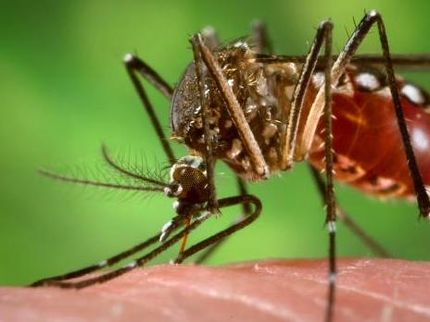New technology used to construct the first map of structural variation in the human genome
Methods also applicable to disease diagnosis, drug response tests
Beyond the simple stream of one-letter characters in the human genome sequence lies a complex, higher-order code. In order to decipher this level of architecture, scientists have developed powerful new experimental and algorithmic methods to detect copy number variants (CNVs)-defined as large deletions and duplications of DNA segments. These technologies-reported in the journal "Genome Research" were used to create the first comprehensive map of CNVs in the human genome, concurrently published in Nature.
CNVs are responsible for genetic changes in Alzheimer's and Parkinson's, susceptibility to HIV-1, some forms of color blindness, and many other diseases. They lead to variation in gene expression levels and may account for a large amount of phenotypic variation among individuals and ethnic populations, including differential responses to drugs and environmental stimuli. Mechanisms underlying the formation of CNVs also provide insight into evolutionary processes and human origins.
Using microarray technology, scientists can scan for CNVs across the genome in a single experiment. While this is a cost-effective means of obtaining large amounts of data, scientists have struggled to accurately determine CNV copy number and to precisely define the boundaries of CNVs in the genome. Two papers published in Genome Research present approaches to address these issues.
One paper describes a new whole-genome tiling path microarray, which was constructed from the same DNA used to sequence the human genome in 2001. The array covers 93.7% of the euchromatic (gene-containing) regions of the human genome and substantially improves resolution over previous arrays. The array was employed in a process known as comparative genomic hybridization (CGH), which involves tagging genomic DNA from two individuals and then co-hybridizing it to the array. Data from the array were assessed with a new algorithmic tool, called CNVfinder, which accurately and reliably identified CNVs in the human genome.
The other paper presents a new multi-step algorithm used with the Affymetrix GeneChip(r) Human Mapping 500K Early Access SNP arrays. The specificity of the algorithm, coupled with the increased probe density of these arrays, permitted the identification of approximately 1,000 CNVs, many of which were below the detection size limit of alternative methodologies. Furthermore, the algorithm more accurately estimated CNV boundaries, thereby permitting a detailed comparison with other genomic features.
Original publication: Fiegler, H., Redon, R., Andrews, D., Scott, C., Andrews, R., Carder, C., Clark, R., Dovey, O., Ellis, P., Feuk, L., French, L., Hunt, P., Kalaitzopoulos, D., Larkin, J., Montgomery, L., Perry, G.H., Plumb, B.W., Porter, K., Rigby, R.E., Rigler, D., Valsesia, A., Langford, C., Humphray, S.J., Scherer, S.W., Lee, C., Hurles, M.E., and Carter, N.P.; "Accurate and reliable high-throughput detection of copy number variation in the human genome."; Genome Res. 2006, 16: 1566-1574.
Komura, D., Shen, F., Ishikawa, S., Fitch, K.R., Chen, W., Zhang, J., Liu, G., Ihara, S., Nakamura, H., Hurles, M.E., Lee, C., Scherer, S.W., Jones, K.W., Shapero, M.H., Huang, J., and Aburatani, H.; "Genome-wide detection of human copy number variations using high-density DNA oligonucleotide arrays."; Genome 2006, Res. 16: 1575-1584.
Most read news
Organizations
Other news from the department science

Get the analytics and lab tech industry in your inbox
By submitting this form you agree that LUMITOS AG will send you the newsletter(s) selected above by email. Your data will not be passed on to third parties. Your data will be stored and processed in accordance with our data protection regulations. LUMITOS may contact you by email for the purpose of advertising or market and opinion surveys. You can revoke your consent at any time without giving reasons to LUMITOS AG, Ernst-Augustin-Str. 2, 12489 Berlin, Germany or by e-mail at revoke@lumitos.com with effect for the future. In addition, each email contains a link to unsubscribe from the corresponding newsletter.
























































